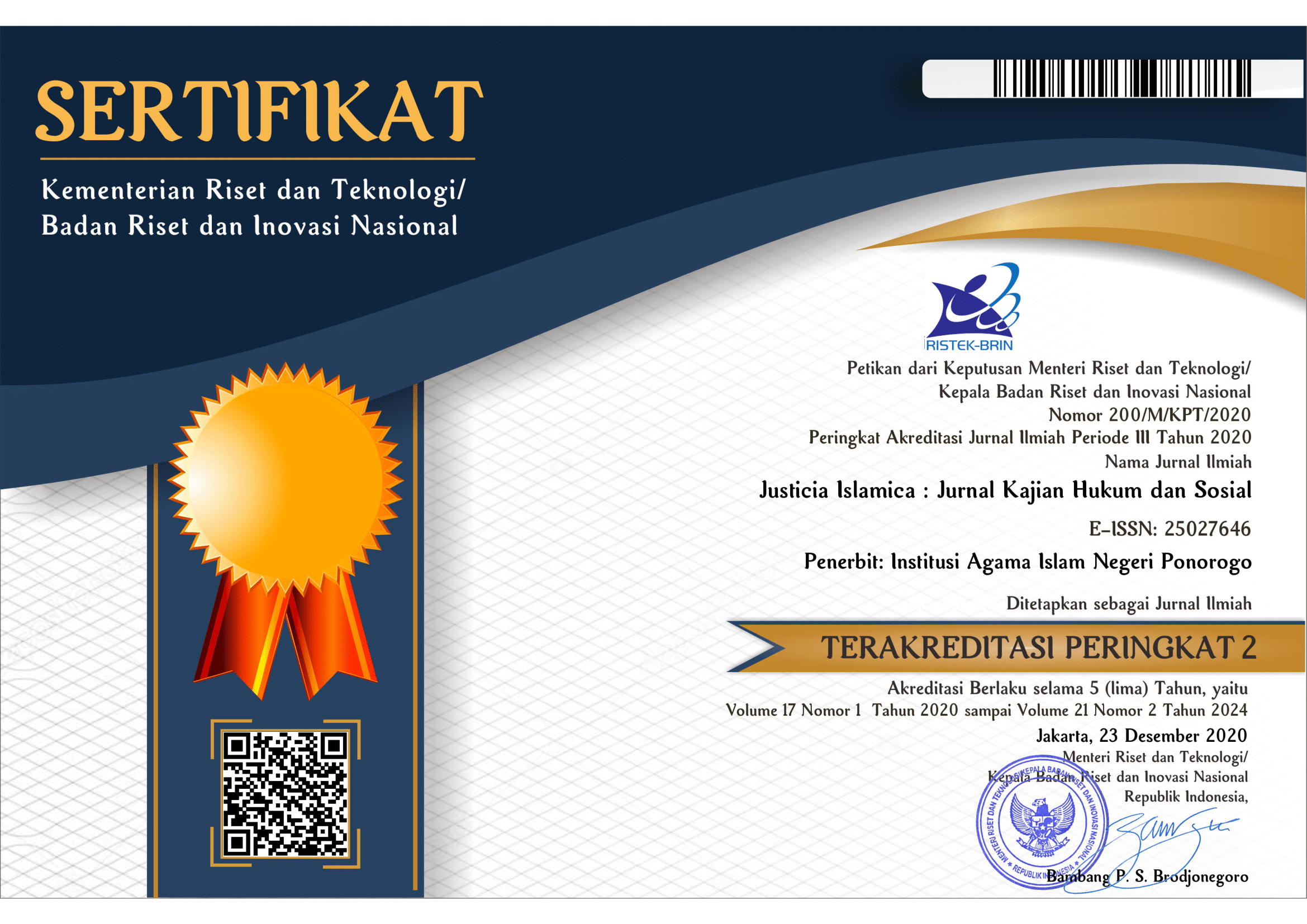Kejahatan Pornografi Upaya Pencegahan dan Penanggulangannya di Kabupaten Ponorogo
DOI:
https://doi.org/10.21154/justicia.v10i2.152Abstract
The government has issued Law No. 44/2008 on pornography. One of the objectives of the law is to realize and maintain an ethical society, to have a noble personality, to uphold the values of God Almighty, and to respect the dignity of humanity. In its development, pornographic material has experienced rapid growth and
and spread rapidly along with the development and advancement of information and communication technology. The circulation and dissemination of pornographic films is now increasingly rapid because it is supported by the sophistication of information and communication facilities, one of which is the internet media that can be accessed by the public at any time. The following paper will examine how the efforts and strategies carried out by the Ponorogo District Government in preventing and overcoming pornographic crimes in Ponorogo District, what are the obstacles and solutions in preventing and overcoming pornographic crimes in Ponorogo District and how policy formulation for the prevention and overcoming of pornographic crimes in Ponorogo District.
Downloads
Published
Issue
Section
License
Copyright (c) 2025 Irma Rumtianing Uswatul Hanifah

This work is licensed under a Creative Commons Attribution-ShareAlike 4.0 International License.
Requirements to be met by the author as follows:
- Author storing copyright and grant the journal right of first publication manuscripts simultaneously with licensed under the CC BY-SA allows others to share the work with a statement of the work's authorship and initial publication in this journal.
Authors can enter into the preparation of additional contractual separately for the non-exclusive distribution of a decadent version of the journal issue (e.g., post it to an institutional repository or publish it in a book), with the recognition of initial publication in this journal.
Authors are allowed and encouraged to post their work online (e.g., in institutional repositories or on their website) before and during the submission process because it can lead to productive exchanges and citations earlier and more severe than published works. (see The Effect of Open Access).
This work is licensed under CC BY-SA.


















